SIA: Tecnica Cochise, Cochise Light, and Cochise Pro
(Last Updated On: )
Brittany headed down to Denver last weekend to attend the SIA show and check out some new gear. We have a lot of “quick-look” products to show everyone, and hopefully we’ll get a chance to thoroughly test and review some of these products in the near future. We’d love to throw in some fun stoke from the backcountry as well, but we’ve pretty much cut out backcountry skiing for the time being thanks to the horrible snowpack we have here in most of Colorado. At least we have Alaska to look forward to in the near future.
In any case, one of our first stops was the Tecnica booth. I’ve been extremely happy with my Cochise boots (REVIEW HERE), but I wanted to learn more about them as well as some new offerings in the Cochise line-up. In my review, I stated that the Cochise boot was the first AT boot I’ve skied that truly skied like an alpine boot, something I’ve always wanted and hadn’t previously found. So why do they ski so well?
Not surprisingly, they ski well because Tecnica did their homework. AT boots present a bit of a challenge for boot designers. After all, they’re supposed to be light, have a tremendous range of motion, grippy soles, and then turn around and perform well on the descent. In an alpine boot, the upper and lower cuffs work as one unit, and inputs from the leg are quickly and decisively transferred from the boot to the ski. AT boots, on the other hand, have to separate the upper and lower in order to achieve a range of motion while in walk mode. In general, the upper and lower are connected in three places- the two hinge points at the ankles, and usually with a metal bar or rod in the back of the boot. Just how much lateral stiffness does that provide? Even rearward in some cases? Not much, in my experience. That’s great if the latest greatest stiff boot claims a forward flex of 200- if the lateral flex doesn’t match it, you might as well put some dynafit fittings in your street shoes and ski that way.
Tecnica tried to mate the upper and lower cuffs of the Cochise, and I think they’ve made some great strides in that area. Here’s the lower- notice the metal “H”:
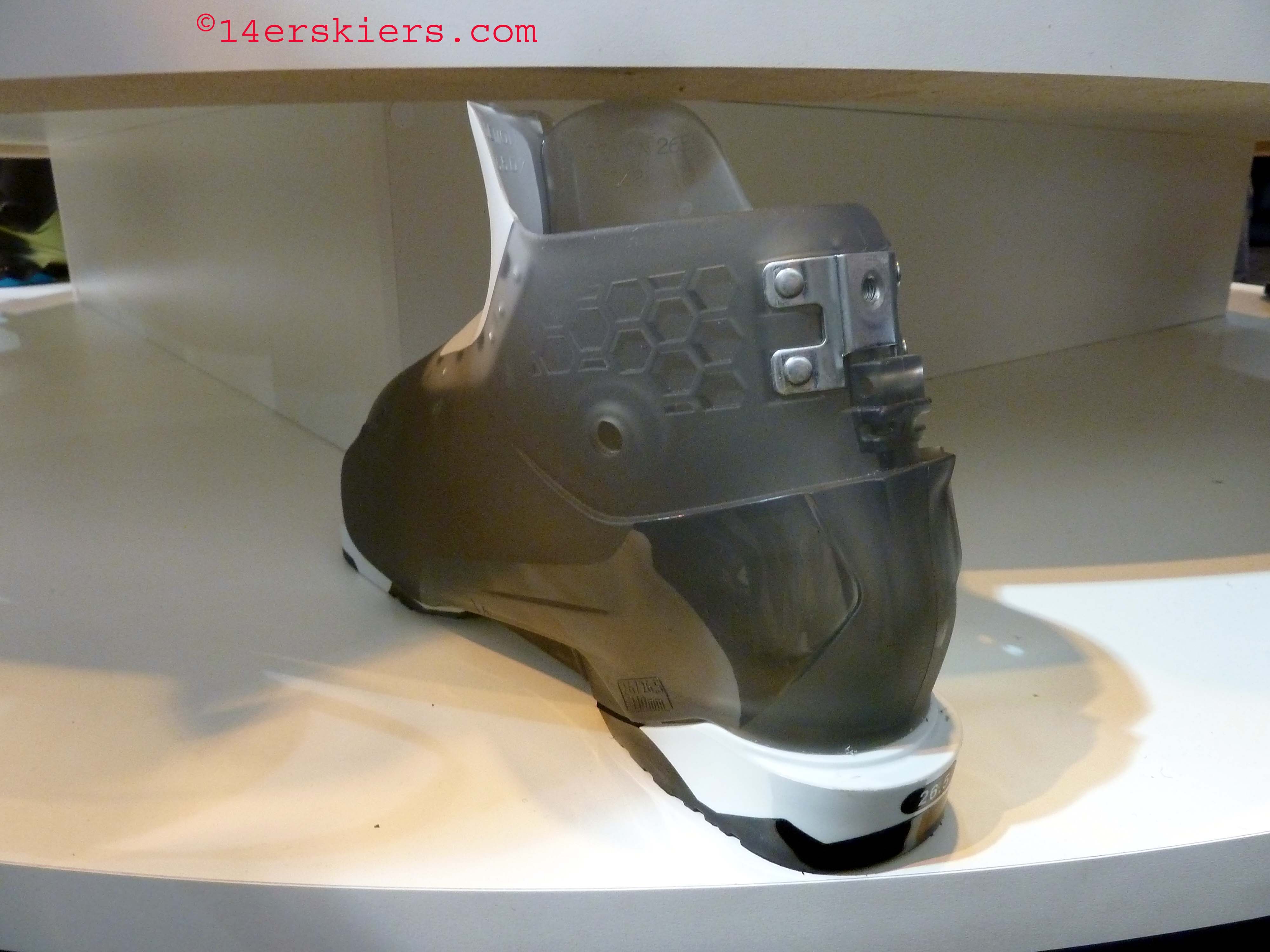
Here’s a combo view with part of the lower cut away. There’s a lot to look at- notice for one thing that the screws on the replacable soles go into T-nuts. Then there’s the Tech fitting (sitting by itself in the heel pocket) that also has metal reinforcement. But you’ll really want to check out the “T” fitting tied to the string in the middle of the boot. This is the part on the upper that fits into the “H” seen above. Click, click- upper and lower mated so much better than before.
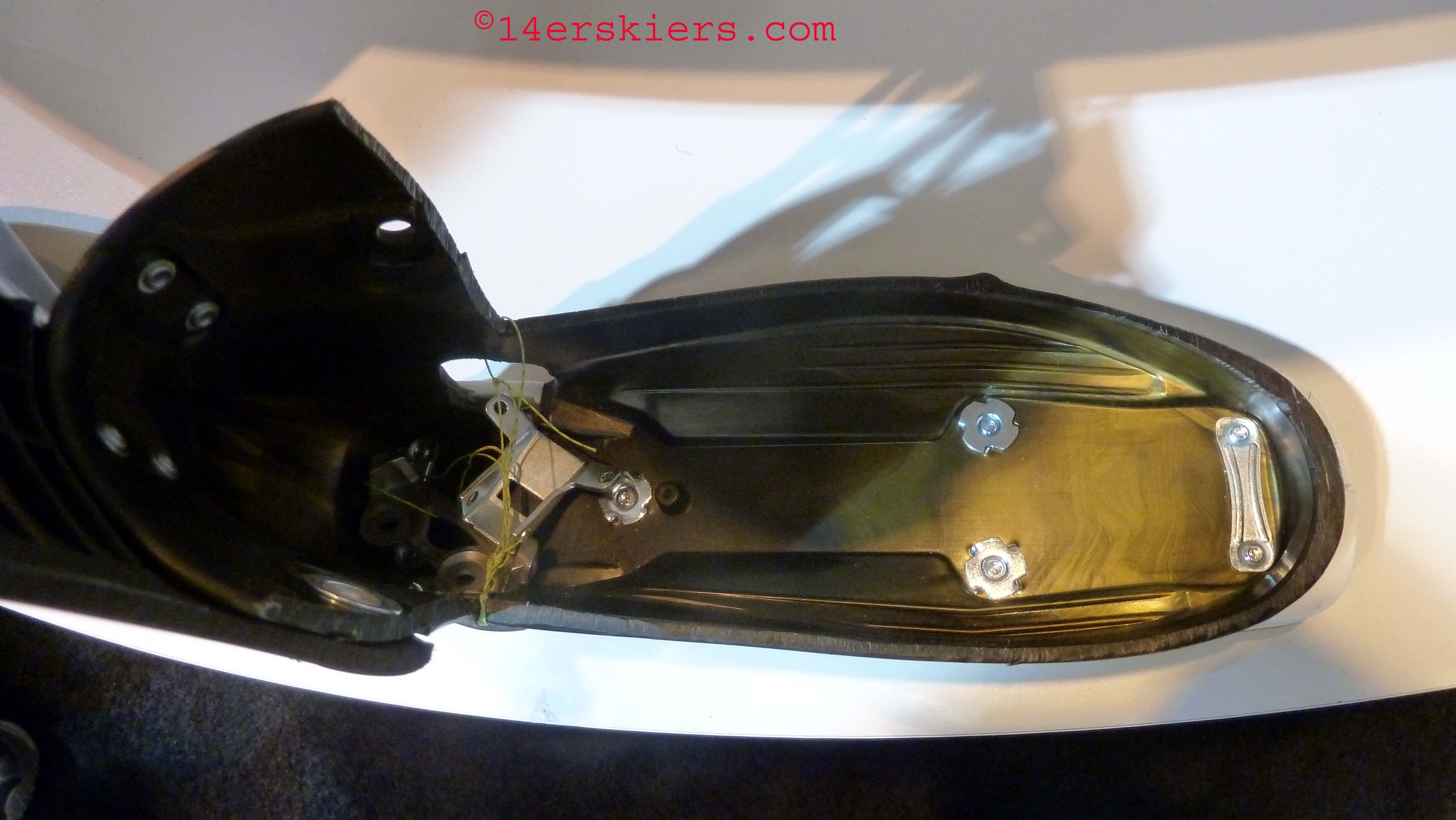
Another view with a cut-away window:
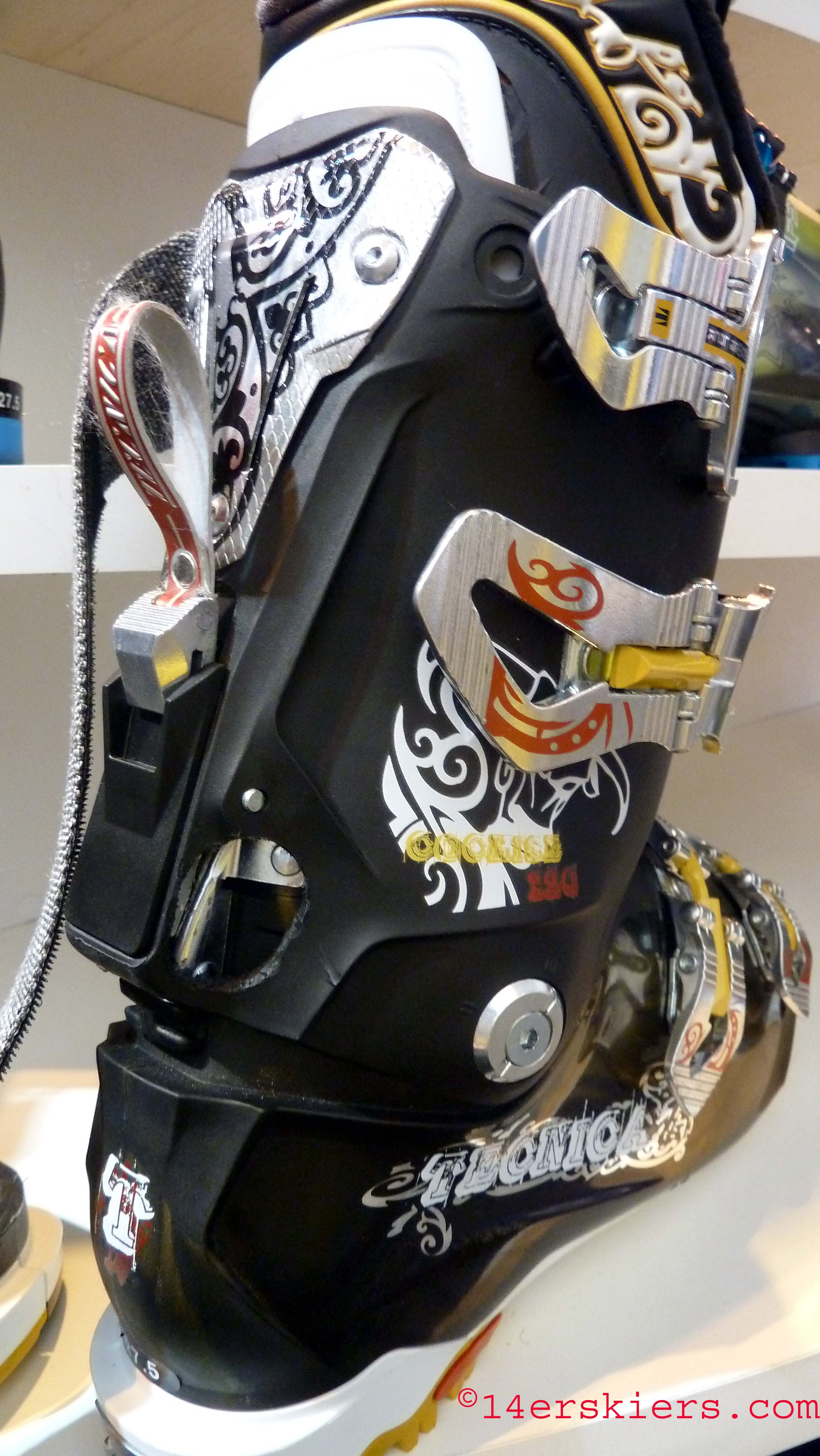
So there you have it- a big part of the reason why I think the Cochise skis so well. Meanwhile, the Cochise will have some cousins next year. First up is the Cochise Pro. Basically, it’s the Cochise with slightly thicker plastic. This has three main results- 1) It’s stiffer (130 vs. 120 for the standard Cochise) 2)It’s narrower- 98mm last vs 100mm for the standard 3)It’s heavier. I tried it on and found it to be a “wide” 98– I could probably adjust the fit and make this boot work, something I can’t do with other 98mm boots (Salomon Falcon). The weight is noticeable– it would be a great boot in a place like Jackson where it could handle top-to-bottom tram laps followed by shorter bootpacks out Granite or Rock Springs, but I’m not sure I’d grab this boot on a 12+ hour tour up a 14er. It comes with standard soles (non- tech), so I feel pretty safe saying that this is where they see this boot. (Yes, you can get tech soles). The Pro is on the upper left:
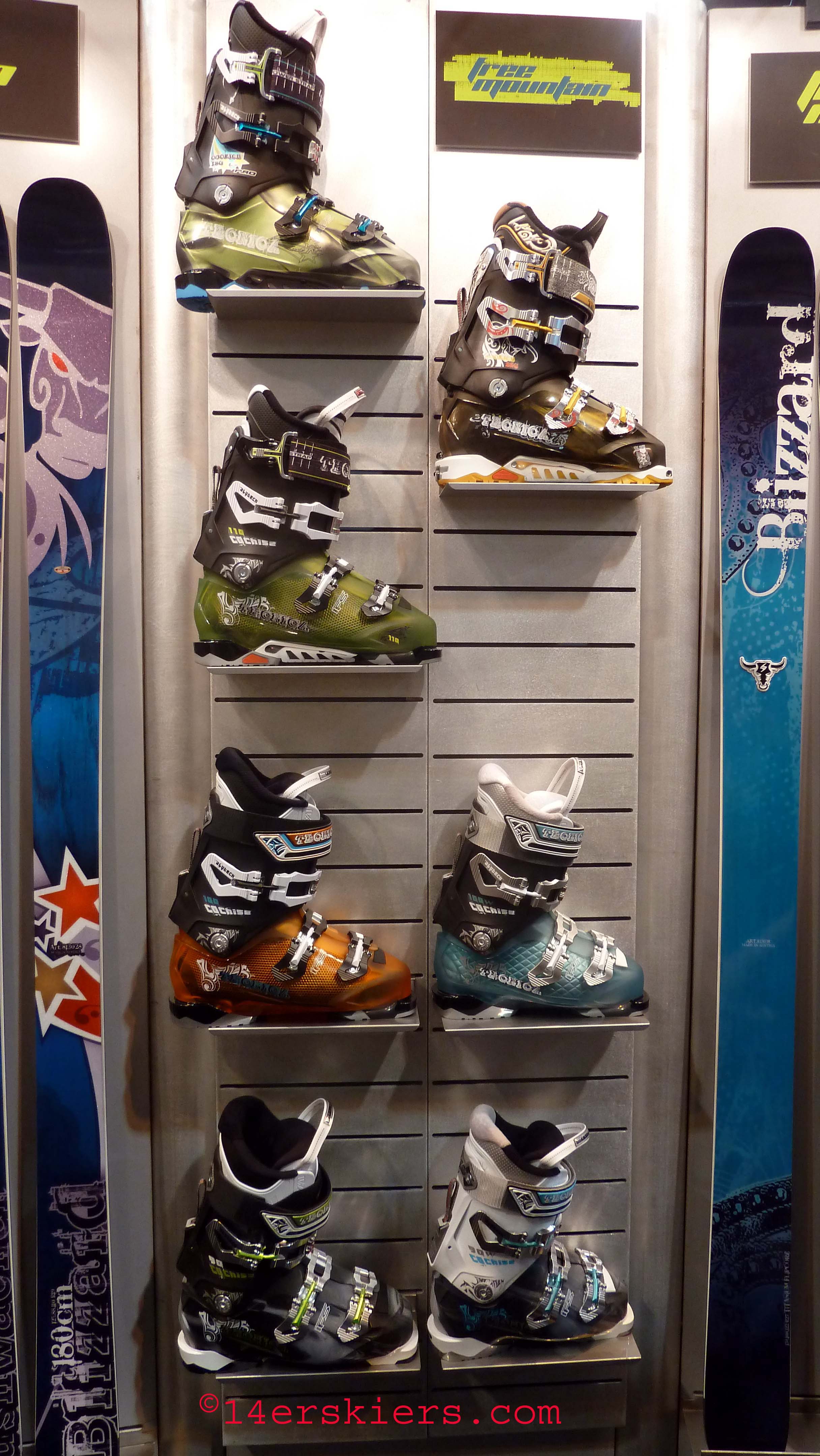
Then there’s the Cochise Light, and I really hope to put this boot to the test this spring. Tecnica replaced the three buckles with lighter weight ones, replaced the top strap/buckle with just a strap, removed the rubber instep grip, and went to a light, moldable (and from what I could tell, awesome) Palau liner.
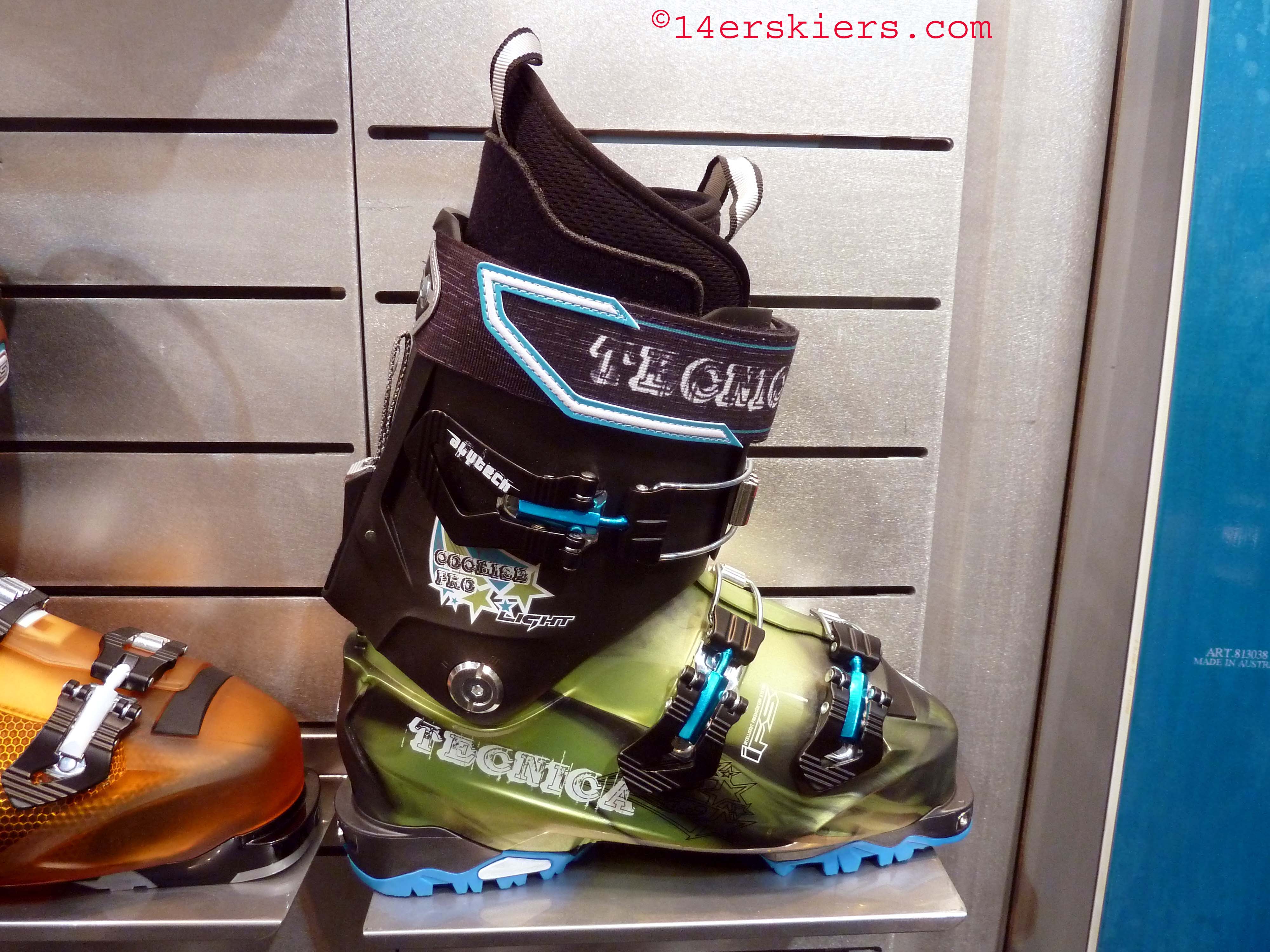
The result? Reportedly, a roughly half pound per boot weight savings. Yes, that’s about a pound for a pair. Impressive. I would miss the instep rubber while snowmobiling, and I would guess that I’d put a bit of weight back on by replacing the strap with the strap/buckle, but still, I want this boot. That’s it- more to come from SIA soon…
- Bluebird Backcountry Ski Area - February 14, 2020
- Gear Review: Smith 4D MAG Goggles - January 6, 2020
- Gear Review: LEKI Tour Stick Vario Carbon Ski Poles - December 9, 2019

Great review!! Of the three Cochise boots you have seen (this years, the pro and the light); what in your opinion is the best choice for powering big skis on the steep heli drop lines you find yourself touring into at turnagain pass (1-5 mile AT approaches and some snowmobile skiing)? I just moved out to Anchorage from Denver, and my Colorado boot quiver is just not cutting it (I am in the maestrale’s…which are breaking…and the full tilt morrisons…which just don’t tour).
Look forward to your feedback…and if you find your yourself in the turnagain pass area and want to go for a tour, shoot me an email!! It just doesn’t stop snowing…
Well, I’m not sure you can get the Pro or the Light yet, so you may have to wait for next year if those boots are really what you want. And of course I haven’t yet been able to make a single turn in the Pro or the Light. But I’d probably look at it like this- the Pro would be my choice for a boot used 80% of the time with lifts (or snomo or heli), or if I was 6’6″ and 225lbs. The Light would be the opposite- 80% touring, with the standard Cochise inbetween. Nice thing about the standard Cochise is that you could put an intuition or Palau liner (which you’ll probably want to do anyway) in there and replace the buckles and end up with the Light (pretty close to it, at least).
We’ll be in Girdwood on the 18th… maybe we’ll ski.
How much of a weight penalty is there from the cochise to the pro (both stock)?
I know this is a review for the cochise…but have you been in the dynafit titan ultralight? I would prefer to stick with an alpine ski company for my beef AT boot…hence the cochise as my first choice….but a lot of good boots out there!!
Girdwood just got 27 last night…another 10 on the way!!
Our source at Technica couldn’t remember the weight of the Pro offhand, and we certainly weren’t carrying a scale with us, but the weight difference is quite noticeable. Brittany picked one up and immediately exclaimed, “Yours aren’t this heavy, are they?” That’s why I envision them as more of a lift/access/heli boot than a pure touring one.
I have not skied the Titan or Titan UL, but I did spend the past 4 seasons in the zzeus, which is nearly identical except the zzeus uses a slightly softer plastic. The Cochise tours a little better, IMO. Comparing those two boots on the descent is like comparing a Yugo and a Ferrari. The Cochise Light will be as light or lighter than the Titan UL. Of course, we’re talking boots here, so if the shoe doesn’t fit, as they say… better off with whichever boot fits your foot best.
I finally got my hands on this years cochise…and as fate would have it, I am between sizes. I am a 1 to 1.5 finger fit in the 27.5, and a 2 to 2.5 finger fit in the 28.5 (my left foot is half size bigger). The 27.5 feels really good stock, and the 28.5 only feels good with an intuition liner to help take up room.
I like a performance fit even with an AT boot, but do have a bone spur on both back heals that I need to make sure doesn’t get worse.
Do I stick with a 27.5 or size up???
Well, only you can say for sure, but food for thought is this: my liners have packed out a bit, so the 27.5 might be perfect after some time in them. I find that Intuitions pack out a lot, so that 28.5 might get really roomy after a while.
Frank perfect review, exactly what i was looking for – from somebody who got experiencis with Cochise in action not only from store. I want to update my backcountry set and cant decide between Cochise PL and Dynafit ZZeus. Friend of mine got Cochise 120DYN and he’s saying that on his weight 180 lb (81 kg) they are very stiff. I’m a bit heavy guy 210 lb (95 kg), 5,9 ft (181 cm) and don’t know how they will behaviour in colder condition as in the shop is different temperature.
Dynafit team wrote me back that ZZeus got flex index about 120 what is the same as PL, but for sure can’t compare two different manufacturer as the flex index is no standard. ZZeus got four magnesium buckles and seems that their are higher that PL so I think they can hold my leg better. PL are stripped-down Cochise 120 so instead of power strap connected with buckle (cochise 120) they leave there only power strap with three aluminum buckles. So how do you felt in PL in downhill mode, the transmition from leg to ski was good, is the cuff high enough? Also I couldn’t find how big the lean angle is. Is it between 15°- 21° as in ZZeus or lower? I will use them with Marker Baron and skis Line Prophet 100.
Sorry for to many questions but I’m trying to get as much information as I can, becasue I have limited selection of products that I can also try here. Thanks in advance =))
Johnny, did you miss my review posted HERE, where I compare the zzeus to the cochise? Some of your questions can be answered there. Keep in mind that flex numbers don’t conform to any sort of standard from one company to another. So while Dynafit may call the zzeus a 120 flex, same as the Cochise, I can tell you from experience with both that they aren’t even close- the Cochise is far stiffer. It’s also a bit taller, which also helps if you are worried about stiffness. I am much smaller than you (5’8″ and 130 lbs) but with my aggressive ex-racer background, I always found the stiffness of the zzeus to be lacking, whereas it’s nearly perfect in the Cochise for me. At your size you may want to consider the Cochise Pro as well to get a little more stiffness- if you’re worried about the weight you can lighten them up a bit with an aftermarket liner or buckles like the Cochise Light. And in the end, with any boot, it’s about fit. Hope that helps!